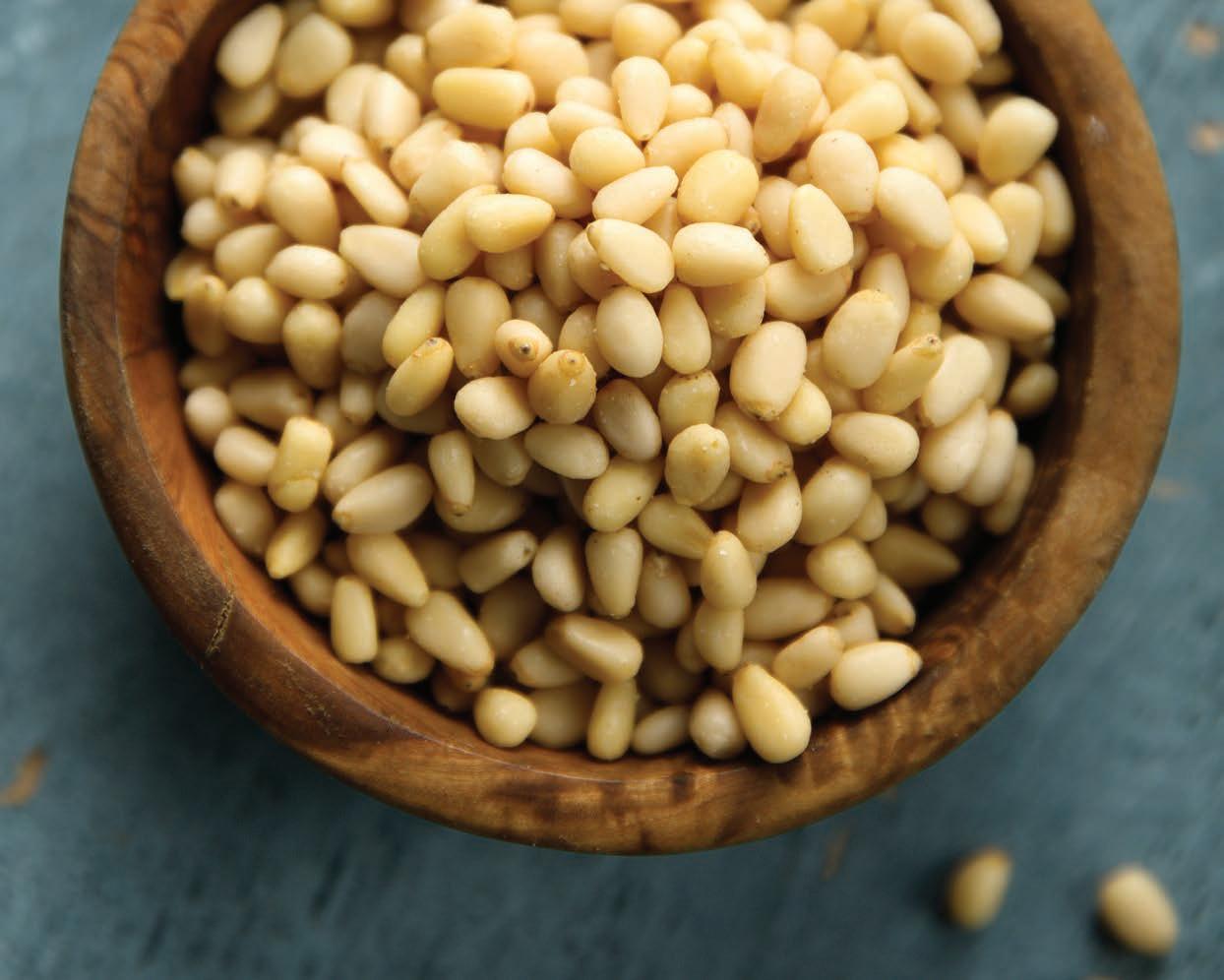
2 minute read
THE POWER OF PINE NUTS
Pine nuts could be Australia’s next big industry, but there are a few thorny challenges to overcome first.
words: Matilda Meikle
Advertisement
Last year, AgriFutures Australia released the Australian Pine Nut Strategic RD&E Plan (2022-2023).
This 10-year scheme highlights the benefits of developing a national pine nut industry, both economically and environmentally.
With Australia importing such large quantities of pine nuts every year, it’s easy to see how creating a local economy could benefit the agricultural sector as a whole. But in order to build this new industry, we need to start now.
Report Revelations
AgriFutures’ plan for developing a thriving pine nut industry identified five areas that need to become a priority in order to meet production demands over the next decade. These suggestions included increasing the output of the Italian Stone Pine (Pinus pinea), a Mediterranean stone pine primarily grown in Southern Europe.
Currently, Australia has only two commercial-sized pine nut growers. This includes Richard Zwar, who began growing crops almost 22 years ago.
“Our market is very much a boutique one but with strong demand, and we sell a recognised clean, green Australian product that doesn’t battle with the pest and disease issues that face overseas markets that grow them,” he says.
AgriFutures’ plan also promotes the introduction of an industry body, and a nut-growing manual. By implementing these steps, they suggest Australia could see a booming pine nut industry in the near future.
A Long Growing Time
The main challenge hindering the possibility for an Australian industry is the time it takes to produce pine nuts.
According to Richard, “it’s approximately seven to 15 years before you get a reasonable crop, so there’s definitely work to be done around how to bring that first harvest forward.”
In order to decrease the amount of time it takes to produce a strong yield, more research needs to be done on grafting trees. There is currently a limited amount of information available to potential growers, hindering their capabilities.
With such a long growing time, many farmers are put off by the idea of dedicating land and resources, when the results may take years to emerge. However, AgriFutures believes that the positives far outweigh the negatives.
Potential Of Pine Nuts
With other nut industries thriving all over the country, including everything from almonds to pistachios and macadamias, it’s easy to see how pine nut production could be beneficial for Aussie growers. Pine nuts are a relatively expensive product, usually selling for around $50-$100 per kilo. If farmers can begin harvesting this crop, the potential for profit is high.
According to AgriFutures Australia Manager Emerging Industries Laura Skipworth, “there is a global demand for pine nuts and production in Europe is declining, so it’s an ideal time to be investing in the potential of this industry.”

While the long growing time is a hindrance to quick development, experts believe rotational cropping could be the answer. For established farms, planting pine nuts around other crops limits the amount of land dedicated solely to these plants, and stops them from becoming a hindrance.
Pine nuts will also stand up to the harsh Australian climate, making them a safer investment in the long run.
Green Growers
As well as economic and industrial benefits, the Pinus pinea also provides environmental incentives.
THIS PAGE: THE PINE NUT INDUSTRY IN AUSTRALIA MIGHT BE SMALL, BUT ITS POTENTIAL IS MUCH BIGGER.

The plant is known as a carbon sequester, meaning it captures carbon dioxide from the atmosphere. Farmers can therefore reduce their carbon footprint simply by growing it.
According to Laura, there are other environmental benefits as well.
“After kernels are retrieved, pinecones can be used for oil extraction and the residue can be used to produce biochar, thereby leaving minimal waste productions to deal with. This makes it a really environmentally conscious crop.”
The pine nut industry in Australia may be small, but its potential is much bigger. In order to capitalise economically and environmentally, AgriFutures believes the time to invest is now. If we can promote the introduction of a pine nut industry, the results could be highly beneficial.










